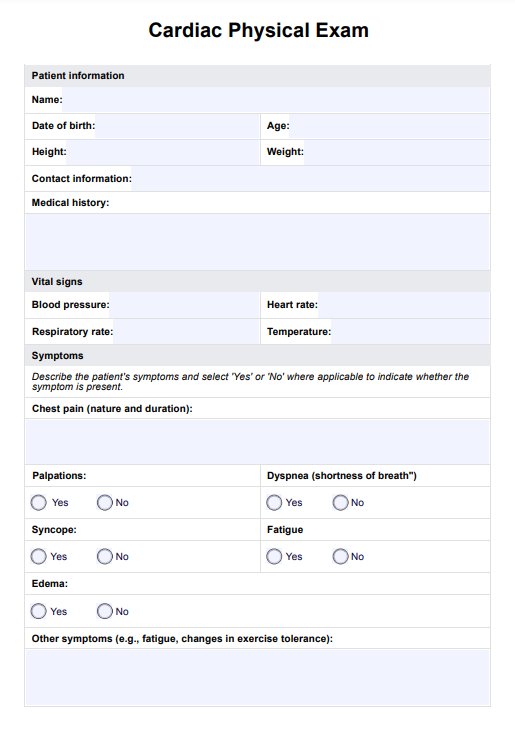A Cardiac Physical Exam is a thorough evaluation of the cardiovascular system by a healthcare professional to detect any signs of heart disease or abnormalities. This exam includes assessments such as listening to heart sounds, checking blood pressure, and evaluating the presence of any symptoms related to heart function.

Cardiac Physical Exam
Access this free Cardiac Physical Exam template to assess your patient's cardiovascular system issues effectively.
Cardiac Physical Exam Template
Commonly asked questions
Key questions in a cardiac medical history include asking about the presence of symptoms like chest pain, dyspnea, palpitations, syncope, swelling in the legs, fatigue, and a history of heart disease or high blood pressure. These inquiries help identify potential risks and underlying conditions affecting the heart.
A cardiac assessment encompasses a detailed physical examination, a patient's medical history review, and diagnostic tests such as an ECG, echocardiogram, and blood tests to evaluate heart health. This comprehensive approach ensures accurate identification of any cardiac issues and aids in developing an appropriate treatment plan.
EHR and practice management software
Get started for free
*No credit card required
Free
$0/usd
Unlimited clients
Telehealth
1GB of storage
Client portal text
Automated billing and online payments











